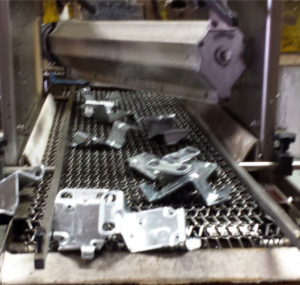
As previously mentioned, the main reason stampers use vanishing and/or evaporative lubricants is the perception of part dryness and lack of residue. Part dryness and subsequent surface residue can be dramatically impacted by three major factors:
1. Method of Application (spray, wipe, roller): Both types of fluids benefit greatly from minimizing fluid volume applied to part surfaces. Suffice to say—a part that is dripping or pooling fluid takes longer to dry in the same conditions than a part that has a fine mist or “wipe” of lubricant applied.
2. Environmental Conditions (relative humidity and temperature): Relative humidity and temperature can greatly influence drying rates of parts. Just as a person would be sweaty in 90°F temperature with 90% humidity—a part will dry slower in those conditions—especially if a water-based product is utilized.
3. Air Circulation: Processes where either type of lubricant is used will benefit from air movement at and around the stamped parts. In the case of conventional, solvent-based vanishing fluids—air circulation also minimizes irritation due to product vapor. The use of fans, air knives and warm air blowers also accelerate drying times –ensuring greater consistency in part finish and quality.


